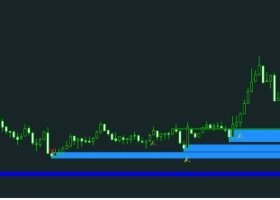
Abstract
This paper reports empirical evidence that a neural networks model is applicable to the statistically reliable prediction of foreign exchange rates. Time series data and technical indicators such as moving average, are fed to neural nets to capture the underlying “rules” of the movement in currency exchange rates. The trained recurrent neural networks forecast the exchange rates between American Dollar and four other major currencies, Japanese Yen, Swiss Frank, British Pound and EURO.
Various statistical estimates of forecast quality have been carried out. Obtained results show, that neural networks are able to give forecast with coefficient of multiple determination not worse then 0.65. Linear and nonlinear statistical data preprocessing, such as Kolmogorov-Smirnov test and Hurst exponents for each currency were calculated and analyzed. Key words: Neural Networks, Foreign Exchange Rate, Statistical Tests, Hurst Exponent, Complex Systems Theory
1. Introduction
Forex is the largest and most liquid of the financial markets, with an approximately $1 trillion traded every day. It leads to the serious interest to this sector of finance and makes clear that for various reasons any trader on Forex wish to have an accurate forecast of exchange rate.Most of traders use in old fashion manner such traditional method of forecast as technical analysis with the combination of fundamental one. In this paper we develop neural network approach to analysis and forecasting of financial time series based not only on neural networks technology but also on a paradigm of complex systems theory and its applicability to analysis of various financial markets (Mantegna et al., 2000; Peters, 1996) and, in particularly, to Forex.
While choosing the architecture of neural network and strategy of forecasting we carried out data preprocessing on the basis of some methods of ordinary statistical analysis and complex systems theory: R/S-analysis, methods of nonlinear and chaotic dynamics (Mantegna et al., 2000; Peters, 1996).
In the present paper we do not describe all of them. We present here only the results of the Kolmogorov-Smirnov test and results of R/S-analysis. However we stress that the preliminary analysis has allowed to optimize parameters of neural network, to determine horizon of predictability and to carry out comparison of forecasting quality of different currencies. Below we give some remarks relating to advantages of neural networks technology over traditional methods and compare our approach with the methods of other authors First, neural networks analysis does not presume any limitations on type of input information as technical analysis does. It could be as indicators of time series, as information about behavior of another financial instruments.
It is not without foundation, that neural networks are used exactly by institutional investors (pension funds for example), that deal with big portfolios and for whom correlations between different markets are essential. Second, in contrast to technical analysis, which is based on common recommendations, neural networks are capable to find optimal, for given financial instrument, indicators and build optimal, for given time series, forecasting strategy. Let us remind that in present study we forecasted the exchange rates of only selected currencies on Forex market. As currencies to deal with, we chose British Pound, Swiss Frank, EURO and Japanese Yen.
The following motivates this choice: practically all the main volumes of operations on Forex are made with this currencies. Let us note that there were published a lot of papers, where similar problems have been studied. (Jingtao Yao et al., 2000; Castiglione, 2001; Kuperin et al., 2001; Lee et al., 1997; Tino et al., 2001; McCluskey, 1993). Let us briefly look round the results some of them. In (Castiglione, 2001) there were studied the problem of sign of price increments forecasting. As an analyzed data were taken such indices as S&P500, Nasdaq100 and Dow Jones. Has been taken multilayer perceptrons of different configurations, with different number of hidden neurons. As a result there has been shown a possibility of forecasting of the sign of price increments with probability of slightly higher than 50%, i.e. a little bit better then just coin tossing. We suppose, that such kind of results is irrelevant from the practical point of view and has an academic interest.


